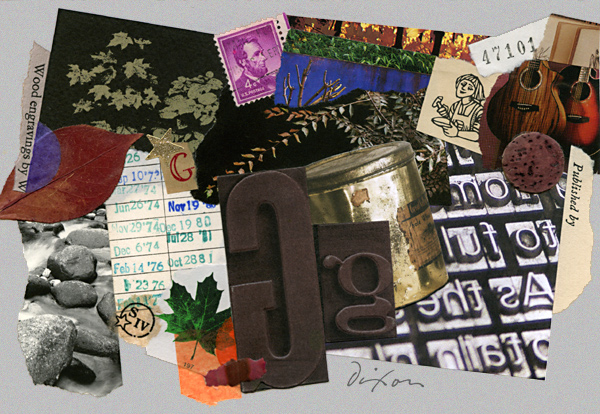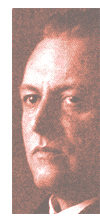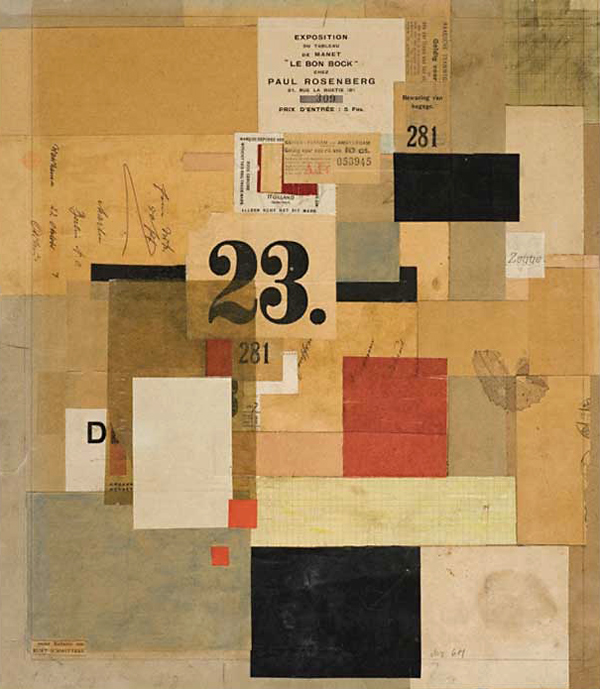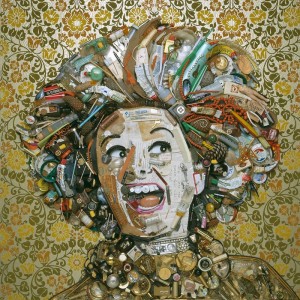“I value sense and nonsense alike. I favor nonsense, but that is a personal matter.”
— Kurt Schwitters
When creating a collage, there is no right or wrong approach, but I can’t help but notice the extent to which some artists go in their obvious effort to be clever. Whether one seeks the visual pun, an intellectual twist, or utter shock value, I think all of us would hope to avoid a result that looks too “gimmicky.” For many of us, the goal is to find a desirable place on a spectrum that extends from the fully honed concept to the purely unconscious response. There are times when the progression from start to finish is a smooth, natural flow. More often than not, the process becomes a balancing act of decisions.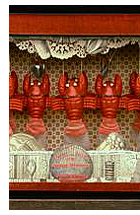 The artist weighs the various relationships between layers of overt connotation and covert significance. Blending levels of stark clarity with obscurity, insinuation, and nuance is what gives the medium of collage its distinctive power.
The artist weighs the various relationships between layers of overt connotation and covert significance. Blending levels of stark clarity with obscurity, insinuation, and nuance is what gives the medium of collage its distinctive power.
In The Essential Joseph Cornell, Ingrid Schaffner delineates the various threads of underlying meaning in Cornell’s “A Pantry Ballet (for Jacques Offenbach),” and how the artist weaves together French Romantic poetry, Lewis Carroll, lobsters, metaphysics, and the once-scandalous cancan. She explains how his work “was built on the power of association and was so well constructed that it is less essential for us to understand all the references than it is to let our mind wander and play with the images.” There is perhaps no artist who influenced the middle decades of the hundred-year history of collage more than Cornell. His constructions demonstrate just how seamless the balance of conscious and subliminal meaning can become in a work of art.
I like to produce compositions without the motive force of intention, but I also enjoy working with an organizing idea or theme. During the course of its creation, a collage may rely on either principle. A piece might begin as sheer abstraction and evolve toward symbolic implications. On the other hand, it might begin with a mental construct that invites other types of intuition and gut reactions. The essence of collage is complex, synergistic, alchemical. Let us all make more!
Cyclic Attraction
collage miniature by J A Dixon
7.75 x 3.375 inches
collection of G Zeitz
